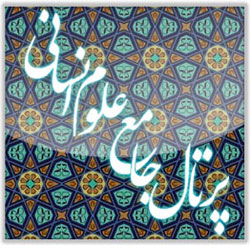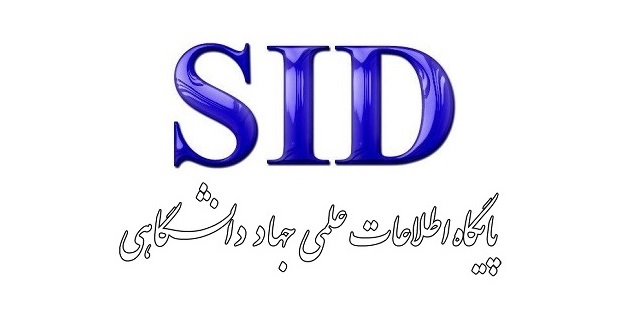Examining the Identity Characteristics of Urban Spaces through a Phenomenological Approach (Case Study: Khorramabad Daily Bazaar)
Keywords:
Urban spaces, phenomenology, urban markets, daily market, KhorramabadAbstract
This article investigates the identity characteristics of urban spaces and the lived experiences of citizens and vendors through a phenomenological approach in the Khorramabad Daily Bazaar. The research is applied in nature and employs a descriptive-analytical methodology. Data were collected using both fieldwork and library research methods. Analytical tools include SPSS and Excel software, which were utilized for the quantitative data analysis. In this study, various statistical models such as the t-test and the Marcus Model were employed to evaluate and rank the identity characteristics of the Daily Bazaar. The results indicate that the t-test outcomes reflect a positive condition of sense of belonging to the urban space in the Khorramabad Daily Bazaar, with a mean score of 3.1, a t-statistic of 1.021, and a significance level of 0.005. Furthermore, social interactions, with a mean of 3.25, a t-statistic of 2.341, and a significance level of 0.002, indicate positive social engagement. Access to social services also demonstrates adequacy, with a mean of 3.5, a t-statistic of 4.274, and a significance level of 0.001. Perceived social safety in public spaces, with a mean score of 3.6 and a t-statistic of 3.562, indicates a high level of public trust in the safety of these spaces. In contrast, cultural diversity, with a mean of 2.8, a t-statistic of -2.441, and a significance level of 0.001, reveals a deficiency in this dimension. Moreover, the results of the Marcus Model indicate that the Daily Bazaar holds a positive desirability degree across various identity dimensions, including lived experience and place attachment. These findings can assist urban planners in focusing on strengthening cultural identity and collective memory to enhance citizens' sense of belonging and satisfaction.
Downloads
References
1. Abizadeh E, Bakhtar S. Identifying drivers affecting identity and sense of place with a futures studies approach (Case study: Kandovan village). Quarterly Journal of Spatial Planning. 2023;13(2).
2. Behdadfar M. Cultural Heritage and Urban Identity: A Comparative Study of Eastern and Western Approaches. Journal of Cultural Studies. 2020;8(1):15-25.
3. Kian M, et al. The Role of Public Spaces in Urban Identity: A Case Study of Contemporary Cities. International Journal of Urban Planning. 2020;4(2):372-80.
4. Ramazani M, Qarebaglu M, Molaei A. The role of third places in enhancing citizens' sense of belonging: A study from Vali Asr Square to Vali Asr Street intersection in Tehran. Quarterly Journal of Architecture and Urbanism. 2022;1(2).
5. Akbari A, Hosseini Gohari P, Afahmi R. Phenomenology of urban space production in the lived experiences of Tehran citizens regarding cultural public spaces. Scientific Journal of Urban Design Discourse. 2023;4(2).
6. Mohammadi M. A phenomenological analysis of the morphological dimensions of place in the entrances of Tehran city. Scientific Journal of Urban Ecology Research. 2020;11(2).
7. Sahaf, et al., editors. Explaining the phenomenological sense of place based on human lived experiences (Case study: Shohada Square, Mashhad). Khorasan Research Journal; 2023.
8. Sharifzadeh MR, Salimi M, Bonyardlan I. Phenomenology of sacred places with a focus on Iranian-Islamic architecture (Case study: Sheikh Lotfollah Mosque, Isfahan). Scientific Journal of Islamic Mysticism. 2020;16(63).
9. Pour Mohseni A, Habib F, editors. Factors influencing the sense of belonging to urban places from a phenomenological perspective. Sixth International Conference on Research in Science and Engineering and Third International Congress on Civil Engineering, Architecture, and Urban Planning in Asia; 2021.
10. Rehan M. Urban Identity and Historical Connection: A Key to Branding Cities. Journal of Urban Studies. 2014;12(3):45-55.
11. Lefebvre H. The Production of Space: Blackwell Publishing; 2016.
12. Masterson VA, Enqvist JP, Stedman RC, Tengö M. Sense of place in social- ecological systems: From theory to empirics. Sustainability Science. 2019;14:555-64.
13. Tan SK, Tan SH, Kok YS, Choon SW. Sense of place and sustainability of intangible cultural heritage - the case of George Town and Melaka. Journal of Tourism Management. 2018;67:376-87.
14. Yazdani MH, Ali Pour E, Mahmoudi A. Examining and analyzing the identity of urban neighborhoods with an emphasis on sense of belonging (Case study: Thirteen neighborhoods on the outskirts of Ardabil city). Journal of Sociology of Social Institutions. 2019;6(14).
15. Foroutan, et al. The role of spatial identity components in the economic development of peri-urban areas (Case study: Rasht city). Journal of Development of Peri-Urban Spaces. 2023;5(2).
16. Panahi S, Afalatoonian Za-A. Explaining the visual culture of materials and its role in shaping architectural identity (Based on a phenomenological perception approach). Scientific Research Journal of Geography and Regional Planning. 2022;12(49).
17. Zabihih H, Abdolkarimi Koumeh H, Daneshju K. Explaining effective criteria of hermeneutic phenomenology of place in the architectural design process. Kimiaye Honar Scientific Journal. 2023;12(48).
18. Vink R, Varró K. Running Rotterdam: On how locals' participation in running events fosters their sense of place. GeoJournal. 2021;86(2):963-78.
19. Newell R, Canessa R. From sense of place to visualization of place: Examining people-place relationships for insight on developing geovisualizations. Heliyon. 2018;4(2):1-37.
20. Shahabiyan P, Shahriaree S, Lak A. Understanding the phenomenon of colorlessness in the urban spaces of Tehran megacity through the application of interpretive phenomenology. Environmental Sciences Quarterly. 2023;21(1).
21. Noorollahi M, Barzegar A, Arayesh MB. Proposing a conceptual model emphasizing effective components in the identity of urban facades based on the meta-synthesis method. City Identity Journal. 2022;17(53).
22. Razavian MT, Ghorchi M, Mohammadi Ganj Z. Examining the components that shape citizens' mental images of urban places, with an emphasis on phenomenological and environmental psychology approaches: A comparative study of districts 1 and 18 in Tehran. Journal of Applied Geographic Sciences. 2024;24(72).
23. Mousizadeh, et al. Phenomenology of factors influencing the formation of Iranian-Islamic identity among youth from the perspective of specialists. Biannual Scientific Journal of Educational Sciences from the Islamic Perspective. 2020;8(15).
24. Grenni S, Soini K, Horlings LG. The inner dimension of sustainability transformation: How sense of place and values can support sustainable place-shaping. Sustainability Science. 2020;15:411-22.
25. Salehi Zalani S, Hashemi A, Mirzad A. Examining the urban identity of Ilam and its identity-forming components. Scientific Journal of Ilam Culture. 2019;20(62,63):118-41.
Downloads
Published
Submitted
Revised
Accepted
Issue
Section
License
Copyright (c) 2025 Mohammad Hadi Ardeshir; Mehrnaz Molavi (Author)

This work is licensed under a Creative Commons Attribution-NonCommercial 4.0 International License.









